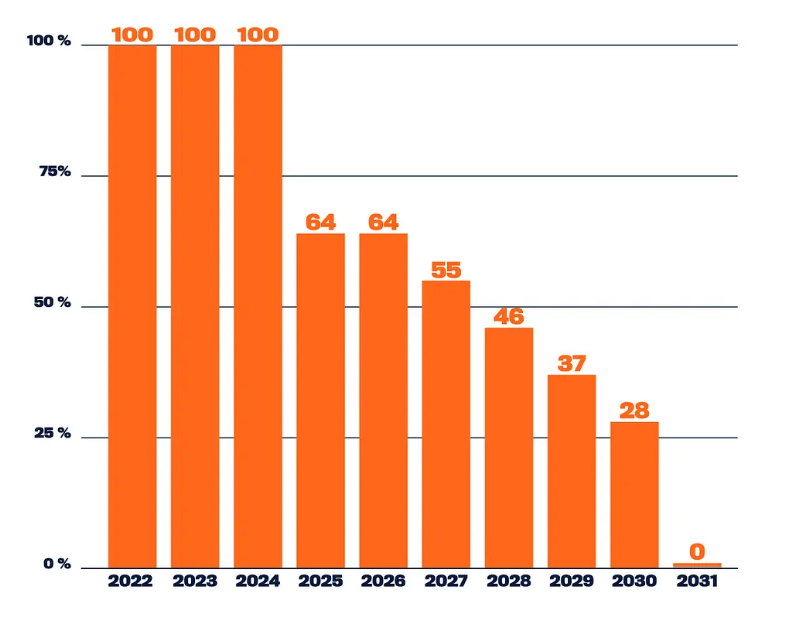Once you have solar panels, they will regularly generate more energy than you currently need. At that point, you supply back to the grid, which is separately registered by the smart meter. The price for the electricity you supply back is the same as the price for the electricity you consume from your utility company. This is called net metering and can still be applied up to 100% until 2023.

Now
Thanks to the net metering regulation, it is very advantageous to supply electricity, as you can offset (net) the electricity you produce against the electricity you consume from the energy company. At the same rate: say 24 cents per kWh, including all taxes (as of July 2021). However, there is a maximum: once you produce more electricity annually than you consume, you receive a lower compensation for the excess electricity you produce. This compensation for the excess electricity you produce ranges from 3 to 12 cents per kWh, depending on the energy supplier.
For example, if you consume 3,000 kWh of electricity from the grid annually and produce 3,300 kWh (through your solar panels), the energy company pays 24 cents per kWh for the 3,000 kWh of electricity supplied. For the additional 300 kWh you supply, the energy supplier will pay at a lower rate. The energy company can set the amount of this compensation for the excess electricity you produce. If you produce a lot of electricity, it is worthwhile to look for an energy company with a high compensation rate for the excess electricity you produce. Overviews are available on the internet, search for ‘feeding back electricity and net metering’. If you want to know exactly what you will receive, contact the energy company.
Starting from 2023
The government plans to phase out the net metering regulation from 2023. However, the Permanent Parliamentary Committee on Economic Affairs and Climate declared the bill on the net metering regulation controversial in January 2021. This means that the phase-out is likely to be postponed.
The phase-out of the net metering regulation means that you will be able to net less electricity every year, and from 2031, you will not be able to net any electricity at all. You will then receive compensation for every kWh of electricity you feed back to the grid without netting. The energy price at that time is, of course, not known; currently, the price varies around an average of 6 cents per kWh. The new regulation applies to everyone, whether you already have solar panels or are planning to buy them.
Let’s return to the example. With the phase-out of the net metering regulation, you can net 9% less every year. This is calculated in the table below. When the regulation is fully phased out, you will receive 6 cents per kWh for all 3,300 kWh of electricity you feed back to the grid.
However, in this example, the net feed-in of 3,300 kWh is after subtracting the self-consumption of 1,500 kWh. So the solar panels have actually produced 4,800 kWh.
Here you can find information on how this works with the smart meter.
Together with the phase-out of the net metering regulation, more and more smart devices and batteries will be introduced. In this way, you are effectively encouraged to increase your own consumption, which is financially advantageous.

